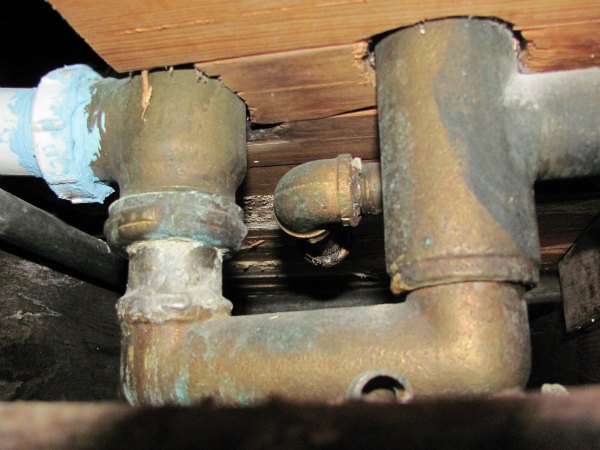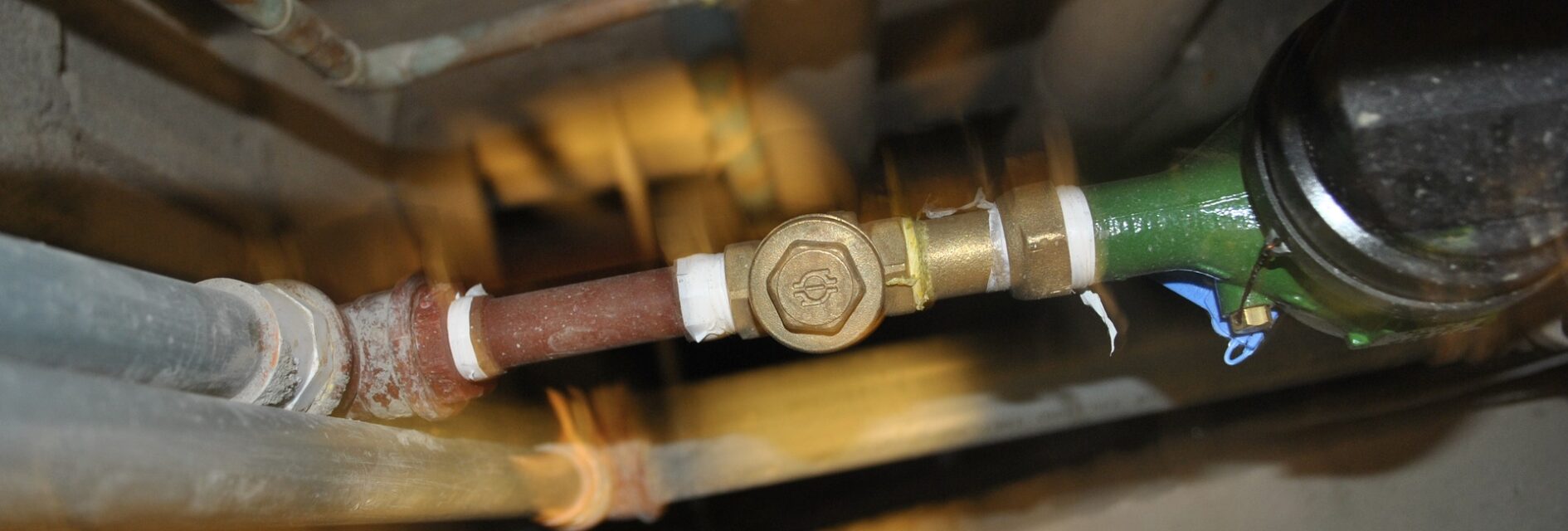Strategic Ways to Handle Plumbing Issues in Older Homes
Strategic Ways to Handle Plumbing Issues in Older Homes
Blog Article
We have stumbled on this post on Plumbing Problems In Old Homes directly below on the web and believe it made good sense to talk about it with you on this site.

Older homes typically feature charm, personality, and history, however they can also bring a host of plumbing problems. Whether you're managing aging pipelines, low tide pressure, or leakages, understanding just how to address these usual problems is critical to preserving a secure and useful home. In this guide, we'll check out the typical pipes challenges dealt with by older homes and provide sensible services to keep your pipes in leading form.
Understanding Common Plumbing Problems
Aging Pipelines
Among the most common problems in older homes is aging pipes. Relying on the era in which your home was built, the pipelines could be made from materials that have worn away in time, such as galvanized steel, cast iron, or perhaps lead. These materials can rust, come to be fragile, or create leaks, resulting in water damages and possible health hazards.
Low Water Pressure
If you're experiencing low water stress, maybe due to mineral deposits, rust inside the pipelines, or old fixtures that are no more operating successfully. This can be a major hassle, specifically in locations like showers and sinks.
Leaking Pipes
Leakages are an additional constant concern in older homes, frequently triggered by rusty or worn-out pipes. Even small leaks can cause considerable water damages, mold growth, and raised water costs otherwise resolved promptly.
Outdated Fixtures
Out-of-date pipes components such as taps, commodes, and showerheads not only look old but may also be less efficient, prone to leaks, or incompatible with contemporary plumbing requirements.
Pipe Rust
Rust is a common problem in older pipes, specifically those made from galvanized steel or actors iron. Rusty pipelines can limit water flow, trigger staining, and ultimately cause leaks or pipe bursts.
Assessing the Condition of Your Plumbing
Inspecting Noticeable Pipelines
Begin by checking any type of visible pipes in your home, such as those in cellars, crawl spaces, or under sinks. Look for indications of deterioration, leakages, or corrosion, which can show underlying issues.
Checking for Leaks
Look for leaks by checking areas around faucets, bathrooms, and under sinks. You can likewise monitor your water meter before and after a period of no water make use of to find concealed leaks.
Water Top Quality Screening
Older pipes can impact the quality of your water. Conduct a water top quality examination to check for impurities such as lead, corrosion, or other impurities that might be introduced by aging pipelines.
Solutions for Typical Pipes Problems
Replacing Aging Pipes
If your home has old, wearing away pipelines, consider changing them with contemporary products like copper or PEX. This can be a substantial financial investment, but it will certainly avoid future concerns and enhance the safety and dependability of your plumbing system.
Fixing Low Tide Pressure
To repair low tide pressure, begin by cleaning or changing old fixtures and eliminating mineral build-up in the pipes. If the issue lingers, it might be required to change sections of corroded pipelines.
Fixing and Replacing Leaking Pipes
For small leakages, you can make use of pipe clamps or epoxy putty as a temporary repair. Nonetheless, it's best to replace leaking pipelines totally to avoid further damage.
Upgrading Components
Updating old components to modern, water-efficient designs can enhance your home's pipes efficiency and reduce water intake. Search for fixtures with the WaterSense label for the best efficiency.
Handling Pipeline Deterioration
If your pipelines are corroded, replacing them with corrosion-resistant products like copper, PVC, or PEX is the best solution. Regular evaluations and water high quality upkeep can aid stop even more deterioration.
When to Call a Professional
While some plumbing problems can be managed with DIY options, there are times when it's finest to call a professional. If you're handling significant leakages, considerable rust, or are unclear concerning the condition of your pipes, a licensed plumbing technician can give professional evaluation and repair service.
Preventive Upkeep Tips
Routine Assessments
Consistently inspect your pipes system for indications of deterioration. Capturing problems early can stop expensive repair services down the line.
Water Stress Law
Guarantee your water stress is within the advised array to avoid worrying your pipes and components. A plumber can mount a stress regulatory authority if required.
Water High Quality Maintenance
Set up water filters or softeners if your water quality is poor. This can protect your pipelines and components from damages triggered by difficult water or pollutants.
Proactive Pipeline Substitute
If your home has older pipes, consider aggressive substitute prior to major issues arise. This can conserve you from emergency situation repair work and water damage.
Conclusion
Managing pipes problems in older homes requires a mix of caution, precautionary maintenance, and prompt upgrades. By recognizing the typical challenges and recognizing when to seek professional help, you can guarantee your plumbing system stays useful and trustworthy for many years to come.
Common Plumbing Issues in Older Homes and How to Fix Them
Owning an older home in Australia comes with its unique charm and a set of challenges, especially when it comes to plumbing. The Sunshine Coast has many older properties that can harbour plumbing problems that aren t just inconvenient but potentially costly. Here s a look at some common plumbing issues in older homes and expert advice on how to handle them.
Outdated Piping Materials
Many older homes were built with galvanised steel, cast iron, or even lead pipes, materials that are far from ideal by today s standards. Galvanised pipes are prone to corrosion and clogging, while lead pipes pose serious health risks.
How to Fix:
Replacing old pipes is a job for a professional. Upgrading to copper or PVC piping not only enhances water quality and flow but also increases the property s safety and value. If you suspect your home has outdated materials, a licensed plumber can conduct a thorough inspection and recommend the best course of action.
Corrosion and Pipe Degradation
Over time, exposure to water and minerals can cause pipes to corrode, leading to leaks, bursts, and water contamination. Corrosion is especially common in homes over 50 years old.
How to Fix:
Regular inspections can catch early signs of corrosion. If corrosion is found, the affected section of piping often needs to be replaced. For homes with extensive corrosion, a complete plumbing overhaul might be necessary. It s crucial to consult with a plumbing expert to understand the extent of the issue.
Tree Root Intrusion
Older neighbourhoods usually have mature trees whose roots can intrude into pipe lines, causing blockages or damage. This is particularly problematic for sewer lines, where roots seek out water sources.
How to Fix:
A plumber can use a specialised camera to inspect sewer lines for root intrusion. If roots are a problem, methods like root cutting or hydro-jetting can clear the obstruction. In severe cases, part of the pipe may need replacing. Consider root barriers around the piping to prevent future issues.
Inadequate Water Pressure
Low water pressure in older homes can be due to various factors, including corroded water lines, sediment build-up in pipes, or outdated fixtures.
How to Fix:
First, check if the low pressure is isolated to one area or throughout the house. Replacing old fixtures can sometimes resolve the issue. However, if the problem is more widespread, it might be due to sediment or corrosion. Flushing the system or replacing the affected pipes usually restores normal pressure. Again, a professional assessment is advisable.
Outdated Fixtures
Older homes often feature fixtures that are not only visually dated but functionally inefficient. This includes everything from toilets and taps to showerheads and washing machine hoses.
How to Fix:
Updating these fixtures can improve both water efficiency and the aesthetic appeal of your home. Modern fixtures are designed to conserve water, which can significantly reduce your water bill and lessen your environmental impact.
Conclusion
Maintaining the plumbing in an older home requires a proactive approach. Regular checks and updates are key to preserving these beautiful properties. If you re facing plumbing issues in your older home, it s best to call on experienced professionals like Green & Gold Plumbing & Gas. With the right expertise, even the most daunting plumbing problems can be resolved, ensuring that your home s character is maintained while its functionality is enhanced.
https://gandgplumbing.com.au/common-plumbing-issues-in-older-homes-and-how-to-fix-them/

As an enthusiastic person who reads about Common Plumbing Challenges In Old Buildings, I assumed sharing that section was really helpful. If you please pause to distribute this entry if you liked it. I treasure reading our article about Plumbing Problems In Old Homes.
Call Today Report this page